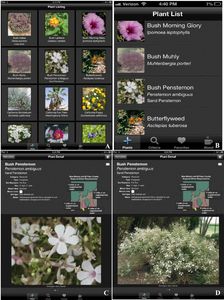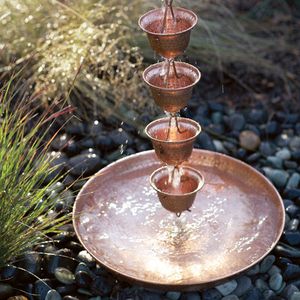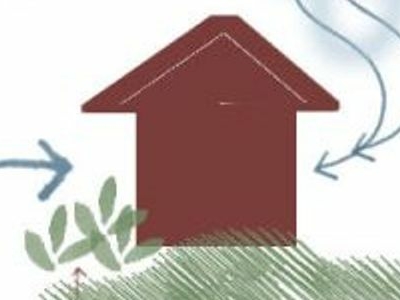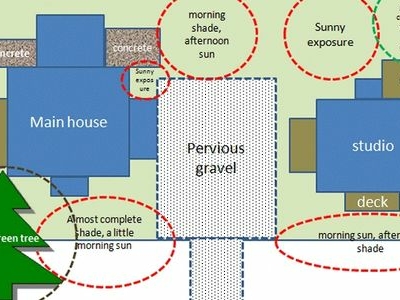TIPS ON GARDENING IN NEW MEXICO
This is a very helpful Circular from NMSU: Growing Zones, Recommended Crop Varieties, and Planting and Harvesting Information for Home Vegetable Gardens in New Mexico

This is New Mexico
There is no “typical” in New Mexico. We have huge variations in growing conditions due to altitude, availability & quality of water, and different soils. If you have moved here from somewhere else, or have learned about gardening from magazines published in the east, please realize that gardeners in NM have to learn to play by different rules.
Pick the Right Plant, Put it in the Right Spot
Learn about the plants that are suited for NM’s harsh environment. Many of the plants that you will find for sale at large chain stores are not suited for NM and some will do just fine. Read the labels. Look for “loves heat”, “full sun”, “drought tolerant”. Shy away from “Moist location”, “rich soil”, “acid loving”, unless you plan to put it in a container.
Check out the Link Below for additional Information:
Low Water-Use Landscape Plants for the Southwest – Desert Blooms NMSU

Or Download the Plant Selector App
Southwest Plant Selector App Free Download (only available for iPhone and iPad) Explore 750+ xeric plants – native and adapted – that thrive in New Mexico, El Paso and the surrounding areas. You can search by plant name, category (tree, shrub, perennial, annual), type (evergreen, deciduous, semi-), and sun requirement (sun/shade combinations) and see each plant’s water requirements for the southern, central, or northern part of the state.
Hydrozoning
Design your landscape to make the most efficient use of the resources you already have. Let’s face it, no place in New Mexico has an unlimited supply of water. By breaking your yard into water zones or “hydro zones”…(High-water zones, Moderate-water zones, Low-water zones and NO-water zones) you can make the most use of the water you have. Each “zone” will contain plants with similar needs for water.


High–Water Zone –This is wherever you frequently spend most of your outside time. It is usually a lush area where you will want the most shade and where you will plant thirsty plants that require the most water. For this reason it’s usually closest to the house or patio where rainwater or grey water from the house can be harvested and used easily. This is a great place for a water feature such as a pond or fountain.
**Hint: Put sprigs of Lavender in birdbaths and water features to slow the build-up of algae!
Moderate-Water Zone – Here plants still rely on irrigation, but require much less water.
Low-Water Zone – This area is usually farthest from the house. The hardier, least thirsty plants are planted here. This is a good area to plant native plants. Many native’s can survive mostly on rainfall or minimal irrigation once they are WELL-established.* *All plants need some water to get them established, and most plants in our area may need some supplemental irrigation in periods of long drought.
Breaking your landscape into hydro zones prevents over-watering. Irrigation can then be more easily matched to the plant requirement, increasing the plant’s resistance to pests and disease, reducing plant mortality. It also makes your job of watering easier.
A hose manifold can easily be attached to a faucet so that each zone can be watered at different rates or for different lengths of time.

Notice above, that the lawn area is located on the North side of the house to take advantage of coolest temperature zone. The dry stream bed bordering lawn can drain excess water run-off to feed the 2 shade trees. Vegetable garden, roses & flowers are on the East & North sides of the house to protect from hot, late afternoon summer sun and damaging winds from the SW. Evergreens & fruit trees are planted near the home to easily distribute large amounts of water they require (could easily come from rain catchment). Native trees & shrubs are planted farthest from the house.


Water Harvesting
Rain water is free, easy to harvest and it’s the best thing you can put on your plants!
A roof with 1000 sq. ft (20’X50,) can yield almost 7,000 Gallons of collected rain water in Alamogordo!
Water Harvesting doesn’t always mean rain barrels or cisterns
Get Creative! You can add style and charm to your garden while cashing in on nature’s nutrient rich FREE water
Observe the “Micro Environments” in your Yard
In general, locations with morning sun and afternoon shade are cooler spots. Filtered shade (under trees) are also cooler. Full sun all day requires tough plants. Even if the tag on the plant says full sun, it may not mean full New Mexico sun. The plant also has to stand up to the heat. Afternoon sun can be a hot spot, especially against a wall. Read books, check out sites on the internet, observe plants in your neighborhood, and make a list including the common name and scientific name and bring it with you when you shop for plants.

Whether you know it or not,
microclimates exist all over your property.


Formed by houses, fences, trees, shrubs, water features and paved surfaces, microclimates create subtle but very real differences in the temperatures and conditions around your home. For example, one area is shaded, but a spot just a few feet away is in full sun. As a result, the temperature at midday between the two spots might vary by as much as 10 or 15 degrees. That can ultimately determine which plants thrive and which don’t.
Once you identify microclimates in your yard and garden, you may be able to expand the number of plants you grow. Soil moisture, soil temperature, sun exposure, length of growing season, etc. are all affected by microclimates. Each direction has its own set of problems. On the north you have shade, winter winds, and moisture that often stays in the soil longer than other spots. A south foundation has scorching sun and often needs constant watering because moisture evaporates quickly. Depending on the soil, eastern exposures can have even moisture and not much wind, but full-sun plants will probably not be happy here. And finally, if your house faces west, what you think is part shade in reality is better for plants that like full sun. And winds can dry out plants very quickly.

Wind is also an aspect of microclimate
Plants in an open area, exposed to the wind, may suffer stress that plants in the lee of a fence or building, or sheltered by trees or shrubs, will not. But some plants, such as ornamental grasses, are healthy and at their most attractive swaying in the breeze.
- Choosing appropriate plants for each garden microclimate will also cut down on disease. Most plant disorders are non-pathogenic. That means they are not caused by pathogens such as viruses or infectious organisms, but by environmental factors. Examples of non-pathogenic diseases include chlorosis, plant wilting, stunting, yield reduction, sunburn, increased salt concentration, and freezing. These noninfectious disorders can be quite serious; they may also weaken a plant so that it becomes susceptible to pathogens it might otherwise have resisted. For example, plants in wet patches may become diseased while their counterparts on a slope remain healthy. (Hydro zoning will reduce this!) The environmental factors responsible for noninfectious diseases are temperature, moisture, light and condition of the soil—all important aspects of microclimates in the garden.
- In high wind areas it may be necessary to plant at a 90 degree angle to the prevailing winds.
This will also help cold air drain away from plants, avoiding a frost pocket. - Plant Windbreaks
You can’t keep the wind out of your garden entirely. There is no magic solution. But you can slow it down with windbreaks and shelterbelts.
If you live in an exposed area, check for the direction of the coldest winds and build your shelter belt across that direction. Don’t make the common mistake of installing a solid barrier as these will increase the problem by creating eddies on both sides of the fence or barrier. Instead, choose a structure that is at least 50% wind permeable – such as a trellis, series of hedges, or a group of trees underplanted with shrubs – and you will create a very effective windbreak. Make sure that your windbreak is as wide as possible to prevent the wind simply sneaking around the side and increasing in speed and ferocity. When planting your shelterbelt, try to choose wind tolerant plants and remember to include a good mix of evergreens in with your deciduous specimens.
Existing Microclimates
We can take advantage of the microclimates created by our house, garage and fence. A south-facing brick wall, for example, will absorb heat during the day and release it slowly during the night. This may be the ideal place for a plant that has a low frost tolerance. It will benefit from the longer period of warmth. Heat loving plants may thrive in a narrow garden strip along the south side of a building. At lower elevations, cool season crops such as lettuce may benefit from being planted in a bed along the north side of a building to take advantage of the shade and cooler temps. Plants that are easily damaged by wind can benefit from the shelter on the leeward side of a wall or building.
- If you are fortunate enough to be able to plant near a structure, using its microclimate, it is a great opportunity to take advantage of Water Harvesting as well.


Creating Microclimates
In areas where you cannot use an existing microclimate, you can often create one.
- Small walls can create two distinct zones…one cool shady, the other warm and sunny. Be careful NOT to create a frost pocket!
~~~~~~CREATE SHADE~~~~~~


Shade Cloth
Block West Sun/Wind Exposure

Protect From Frost Damage
Use cold frames* to start seedlings outdoors or to harden off plants that were started indoors.
For plans on building cold frames visit the links below:
• How to build a cold frame roadrunnerduck http://www.runnerduck.com/coldframe.htm
• Build a cold frame using old windows http://www.doityourself.com/stry/oldwindowuses
Use Row Covers to protect from frost/wind
Row Covers increase air and soil temperature – it traps and collects heat during the day and releases it at night to keep your plants warm and growing!
– Use them in Spring to get a jump start on your garden and keep away pests.
– Use them in Fall to extend your harvest and growing season.
Row covers also protect against wind damage and sunscald as well as damage from insects, birds and pesky browsers. Materials for use can range from plastic sheeting to meshed fabric in the form of floating row covers or frost blankets.
• Floating Row Cover or Frost Blanket
Easy to install- just spread or “float” the lightweight fabric over your plants. Be sure to tie it down at the ends or high winds could cause it to damage plants if not anchored properly! Can be cut to any size or shape with ordinary scissors.
* Lowes and Home Depot carry 10’X50’ frost blankets.
*Green House & Garden Supply in Albuquerque carries rolls of plastic 30’X100’ (Higher grade
than contractor plastic that will last much longer against our high UV.)
• Grow Web
Grow Web Fiber Row Cover—Protects plants from grasshopper and other insect damage without using toxic chemicals. Keeps the bad guys out but lets in air, sun and water, and provides frost protection. Can be used on vegetables, ornamentals, shrubs and small trees. Can also protect against browsing pests such as DEER!
12.3′ x 32.8′ roll averages $30/roll

~~~~~WATERING~~~~~

Check out these Resources & Education Guides from NMSU
Click on a link below to view/download or print info
Home Vegetable Gardening in New Mexico
Choosing Organic Matter for the Home Garden
Determining Amounts of Fertilizer for Small Areas
Organic Gardening–Natural Insecticides
Growing Zones, Recommended Crop Varieties, and Planting and Harvesting Information
Vegetable Variety Recommendations for New Mexico Backyard Gardens
Spices and Herbs for the Home Garden
A Practical Way of Measuring Soil Moisture
Evaluation of an Integrated Limited Irrigation Water Catchment System for Vegetable Production
Nitrogen Monitoring Techniques for Vegetable Crops
Row Cover Vegetable Production Techniques
Greenhouse Vegetable Production
Hoop House Construction: 12-ft. x 40-ft. Hoop House
Coping With Deer in Suburban Gardens
Growing Peppers in New Mexico Gardens
Chile Pepper Disorders Caused by Environmental Stress
Powdery Mildew on Chile Peppers
Verticillium Wilt of Chile Peppers
Asparagus Production in Home Gardens
Raspberries for the Home Garden

Learn how to water
Plants need a deep watering. That means the water needs to reach down 6-8″ for flowers, 12″ or deeper for shrubs and trees. Drip watering and soaker hoses are the most efficient methods. A hose turned very low and left for an hour is another way to deep water. Spraying with a hose for a few minutes will not work. The top inch may be wet, but the water has not reached the roots. Water, then take a trowel and see how deep the water penetrated the soil.
Low Water does not mean No Water.
ALL PLANTS NEED SUPPLEMENTAL WATER FOR THE FIRST YEAR (OR UNTIL ESTABLISHED). It depends on the plant. In general for flowers that are drought tolerant that means deep watering twice a week for the first month or so, once a week after. Shrubs and trees will need once a week until established, then once every week or two. Cactus and succulents may not need additional water after a year or two, but will probably appreciate a once a month deep watering.
Supplemental water is needed in the winter. Roots continue to grow even if the plant above ground appears dormant.

MULCH Conserves Water & Moderate Temp.
Mulch conserves water and cools the roots and is essential in NM. There are many materials. Wood chips from the local saw mill, straw, hay, bark, compost, or rocks. When using uncomposted materials (wood chips or saw dust) do not mix into the soil, just lay it on top. Black landscaping fabric will control weeds while letting water through, but mulch needs to be put on top of the black material or the plants will cook.

Amend your soil
Most soils in Otero County are alkaline and low in organic matter. Every gardener will benefit from a soil test. Get the info at the County Extension Office.
Plant In Spring or Fall
This lets the plants become established before facing a NM summer OR winter!
